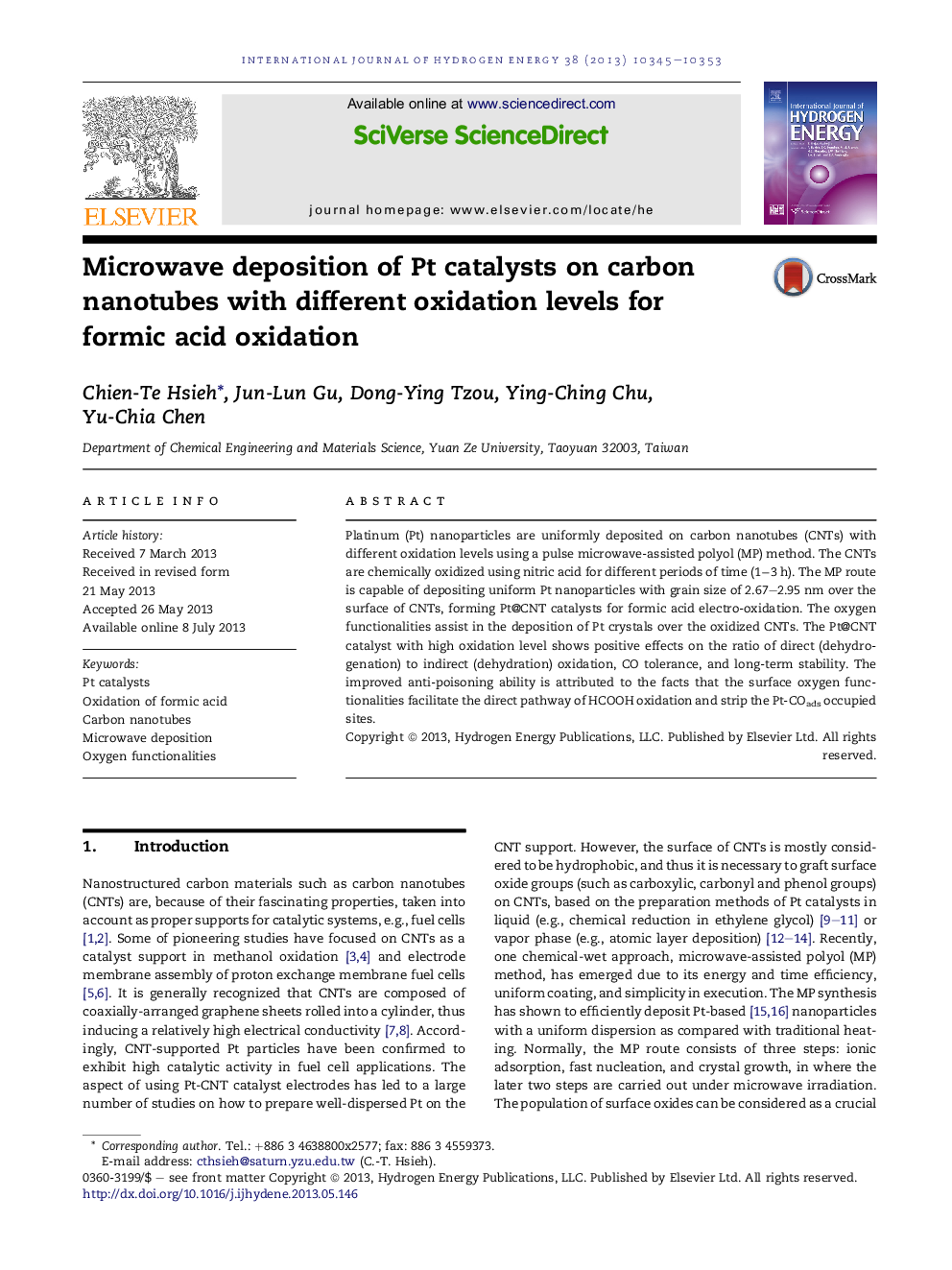| Article ID | Journal | Published Year | Pages | File Type |
|---|---|---|---|---|
| 7722106 | International Journal of Hydrogen Energy | 2013 | 9 Pages |
Abstract
Platinum (Pt) nanoparticles are uniformly deposited on carbon nanotubes (CNTs) with different oxidation levels using a pulse microwave-assisted polyol (MP) method. The CNTs are chemically oxidized using nitric acid for different periods of time (1â3Â h). The MP route is capable of depositing uniform Pt nanoparticles with grain size of 2.67-2.95Â nm over the surface of CNTs, forming Pt@CNT catalysts for formic acid electro-oxidation. The oxygen functionalities assist in the deposition of Pt crystals over the oxidized CNTs. The Pt@CNT catalyst with high oxidation level shows positive effects on the ratio of direct (dehydrogenation) to indirect (dehydration) oxidation, CO tolerance, and long-term stability. The improved anti-poisoning ability is attributed to the facts that the surface oxygen functionalities facilitate the direct pathway of HCOOH oxidation and strip the Pt-COads occupied sites.
Related Topics
Physical Sciences and Engineering
Chemistry
Electrochemistry
Authors
Chien-Te Hsieh, Jun-Lun Gu, Dong-Ying Tzou, Ying-Ching Chu, Yu-Chia Chen,
